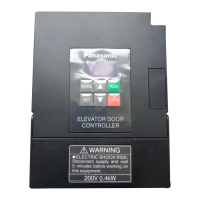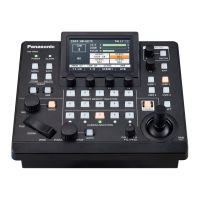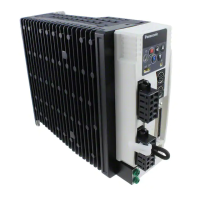Automatic Operation (Position Control)
8-28
8.4 Target Speed Change Function
8.4.1 Description of Functions
The target speed change function is used to change the target speed on an active positioning
table to an arbitrary speed. Even when the speed changes, the operation amount in the table
does not change. This function is available since FP7 MC Unit Ver.1.2.
f
t
When increasing the target speed
When decreasing the target speed
f
t
f
t
Conditions of use
●: Available, -: Not available
Control
method
In the case of the synchronous control, the speed can be
changed only for the master axis.
(Slave axes operate according to the master axis.)
-
Operation
pattern
- The speed can be changed more than once in one table.
- The speed cannot be changed during the deceleration in
accordance with the stop operation.
- The speed cannot be changed during the deceleration in the C-
point control.
- The speed cannot be changed during the dwell time in the C-
point control.
- For the J-point control, use “J-point speed change contact” to
Repeat control
JOG Operation -
- For the JOG operation, change “JOG operation target speed”
directly to change the speed.
Speed change method
Speed direct
specification
This is a method in which a desired speed is specified directly and the change is requested
by I/O.
The valid range of the function can be selected from two patterns, which are “Active table
only” and “Active table to completion of operation”.
Ratio
specification
(Override)
This is a function to change a set speed using a specified ratio (%).
The change request by I/O is not necessary, and the change is reflected when the set value
(ratio) is changed.
The function is valid for all the positioning operations after the set timing.
The ratio specification also becomes valid when the speed is changed by the speed direct

